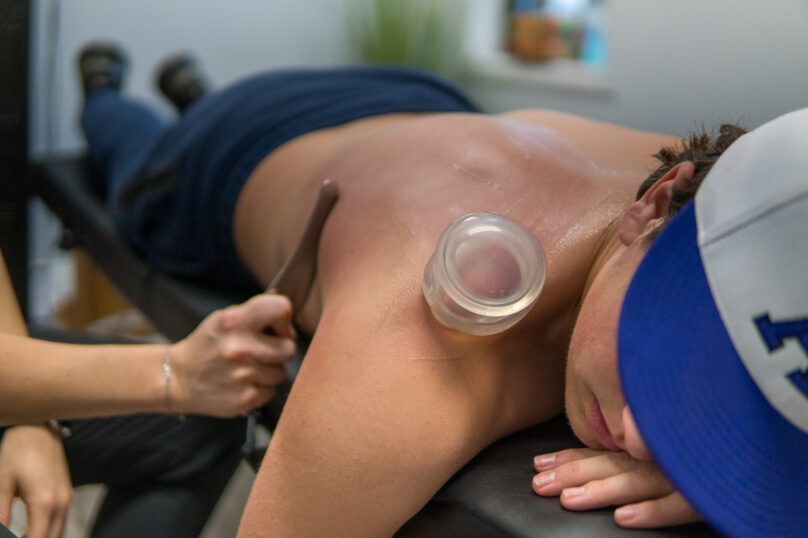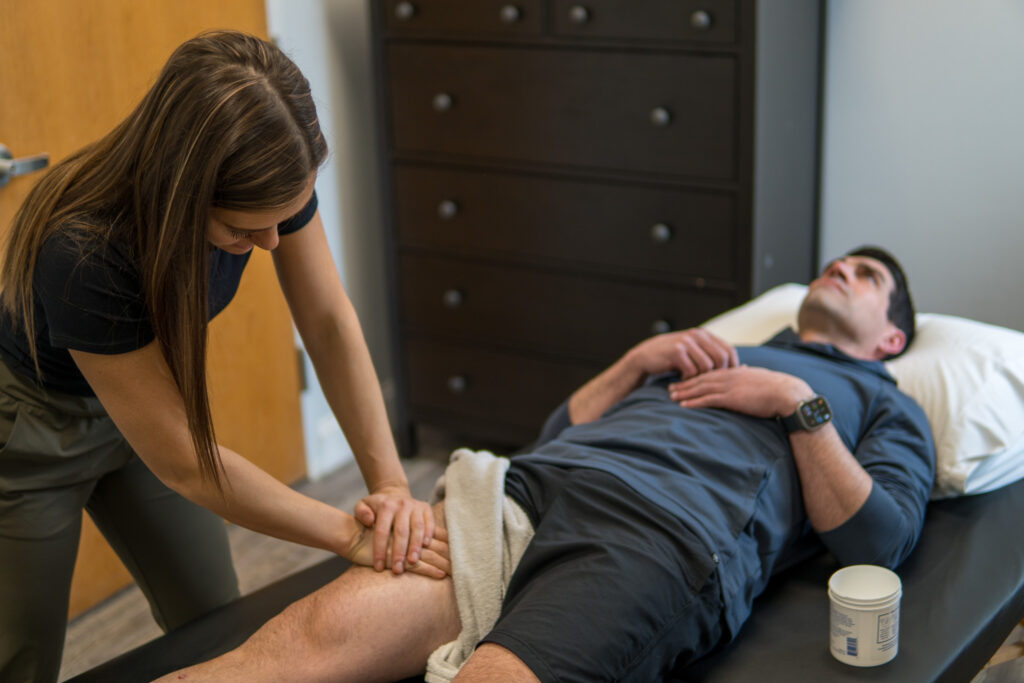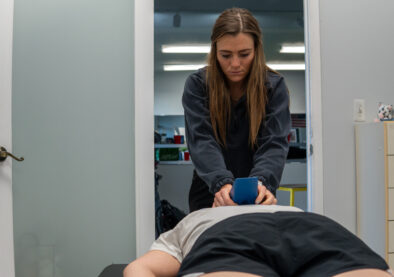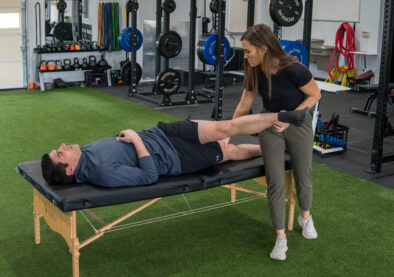- Your cart is empty Browse Shop

Manual Therapy
We believe that purposeful movement starts with understanding how the body works as an integrated system—how muscles, joints, and connective tissues coordinate to support efficient, pain-free function.
Manual therapy is a key part of our approach to both rehabilitation and performance. Through skilled, hands-on techniques, we assess and address the underlying causes of pain, mobility restrictions, and movement dysfunction. Rather than just treating symptoms, we use manual therapy with clinical precision to enhance tissue health, improve joint mechanics, and help your body move the way it was designed to. We use a combination of manual soft tissue techniques and orthopedic manual joint techniques. Soft tissue techniques include:
Cupping Therapy
Instrument-Assisted Soft Tissue Mobilization (IASTM)?
Soft Tissue Mobilization (STM)

What are manual soft tissue techniques?
Cupping Therapy
Cupping therapy is a manual decompression technique that uses specialized suction cups placed on the skin to create negative pressure. This suction lifts and separates tissue layers, encouraging blood flow, lymphatic drainage, and tissue hydration. Unlike traditional soft tissue techniques that compress tissues, cupping decompresses them—addressing tension and restriction from a different angle. When appropriate, this technique helps us reduce restrictions, enhance recovery, and prepare your body for movement-based treatment and training.
When negative pressure is applied through the cups, it draws the skin and superficial fascia away from underlying tissues. This action promotes:
- Enhanced microcirculation and tissue oxygenation to speed up healing
- Reduction in muscle and connective tissue tension
- Improved range of motion and soft tissue adaptability
- Activation of the parasympathetic nervous system, promoting relaxation
- Improved lymphatic drainage
Instrument-Assisted Soft Tissue Mobilization (IASTM)
We use IASTM to help reduce pain, improve tissue mobility, and promote healing. Research shows it can stimulate collagen remodeling, enhance blood flow, and reset neuromuscular patterns—leading to improved range of motion and faster recovery.
This technique is especially helpful for chronic tightness, tendinopathies, and post-surgical stiffness, and is always paired with targeted movement retraining for lasting results. We can create a localized inflammatory response that stimulates the body’s natural healing process and promotes long-term tissue remodeling.
How IASTMworks:
- Breaking down adhesions and abnormal tissue
- Stimulating local blood flow and cellular activity
- Increasing fibroblast production and collagen synthesis
- Enhancing fascial glide and restoring tissue extensibility
- Reducing pain through neurologic desensitization and improved proprioception
- Neuromodulation of pain
Soft Tissue Mobilization (STM)
STM is a targeted manual therapy technique used to assess and treat dysfunction in muscles, tendons, ligaments, and fascia. It involves applying controlled mechanical pressure to soft tissue structures to improve tissue extensibility, and restore normal tissue function.
What are orthopedic manual joint techniques?


Manual joint techniques are essential components of our approach, used to restore optimal joint mechanics, relieve pain, and improve overall movement efficiency. Whether you’re recovering from injury, managing chronic stiffness, or aiming to enhance athletic performance, these hands-on techniques help reset the body’s natural movement capabilities.
These techniques involve skilled, hands-on mechanical forces to the joints, but they differ in velocity, amplitude, intensity, and intent:
- Joint Mobilization is a skilled, passive technique involving slow and controlled oscillatory movements applied to a joint. It is commonly used to restore joint mobility, reduce capsular stiffness, and enhance synovial fluid circulation, all without provoking pain.
- Joint Manipulation is a high-velocity, low-amplitude (HVLA) thrust technique applied to a restricted joint. This rapid and controlled movement is used to restore normal joint mechanics, improve mobility, and reduce pain. It often produces an audible “pop” (cavitation), which results from gas release within the joint capsule. However, it is not indicative of the treatment’s effectiveness.
- Muscle Energy Techniques (MET) are active, manual therapy interventions that use voluntary muscle contractions against controlled resistance from the therapist. These contract-relax sequences are designed to restore joint alignment, reduce muscle tightness, and improve range of motion by engaging neuromuscular reflexes that regulate tone and mobility.
All techniques are backed by biomechanics and neurophysiology and are used selectively based on your assessment, condition, and comfort level.

